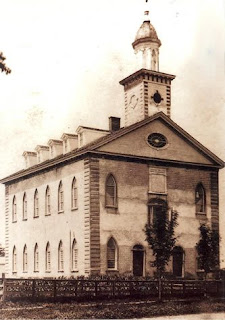A lot of men have been called to be LDS apostles since Joseph Smith’s time. Today, an announcement of a new apostle is big news. In the early days of the LDS Church, many apostles became apostates. Some died, some were dropped over doctrinal disputes. An interesting footnote is the case of Lyman Royal Sherman, who lived and died without ever realizing that he had been called to be an apostle.
It’s open for debate as to whether Sherman should be considered an apostle. A traditionalist would say no, since he was only called and never ordained. However it’s clear that this faithful member of Smith’s church was intended to be an apostle had he lived.
BYU researcher Lyndon W. Cook, in a sketch of Sherman’s life, published in the fall 1978 Brigham Young University Studies, writes that Sherman was born May 22, 1804 in Vermont. He and his wife, Delcena, were baptized in Pomfret, N.Y., in January 1832. Sherman and his family lived in Kirtland, Ohio, until 1838.
According to Cook, Sherman was a close friend of Joseph Smith. He served as a president in the first Quorum of the Seventies from 1835 to 1837. Sherman also remained a very faithful member of the LDS Church. Just before Christmas 1835, Sherman approached Smith and said that he felt he was in need of a revelation. Smith obliged almost immediately, telling Sherman via the revelation that “your sins are forgiven” and “let your soul be at rest concerning your spiritual standing.”
Sherman also participated in secret anointings and ceremonies in the Kirtland Temple (see above) and according to reports, spoke in tongues. As the saints were being forced from Kirtland, opposition leaders sought to use a printing office to manufacture anti-LDS tracts. That printing office was destroyed by fire to prevent that, and historians believe it was the ever-faithful Sherman who set the blaze to thwart Smith’s enemies. Sherman then moved to Missouri and was on the Far West stake high council.
Here’s where it gets interesting. While in Liberty Jail in January 1839, Smith, Sidney Rigdon and Hyrum Smith wrote to Brigham Young and Heber C. Kimball that Sherman should be made an apostle. However, unknown to Smith, Sherman’s health was ruined after the Kirtland strife and he was dying. Kimball and Young, for reasons still unclear, chose not to tell Sherman of his call to the apostleship. Perhaps Sherman was in a coma? In any event, this early church leader died in February 1839, in Far West, never knowing about his call.
Google Lyman Sherman and there are several accounts of his life that are interesting to read. In any event, his family remained active in the church. His wife, Delcena, crossed the plains to the Salt Lake Valley and died in 1854 in Salt Lake City.
-- Doug Gibson
-- Originally published in StandardBlogs


